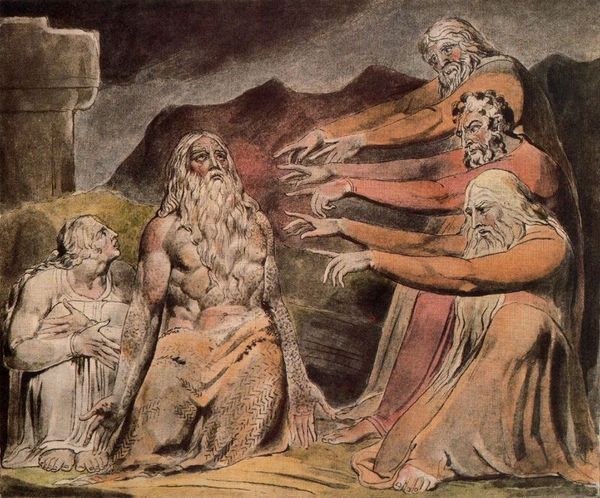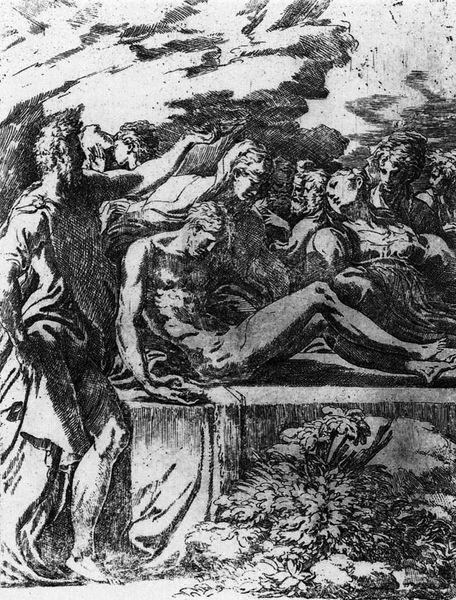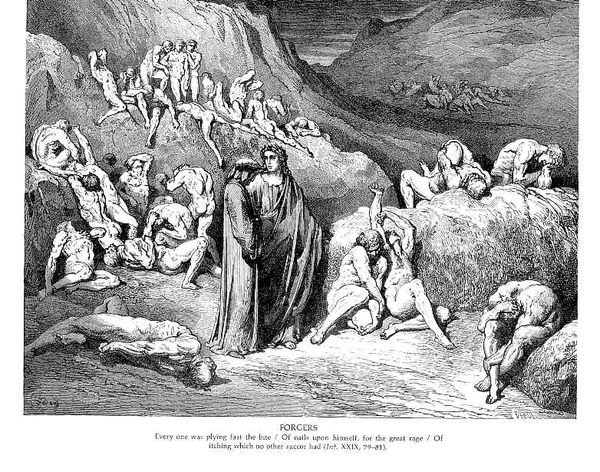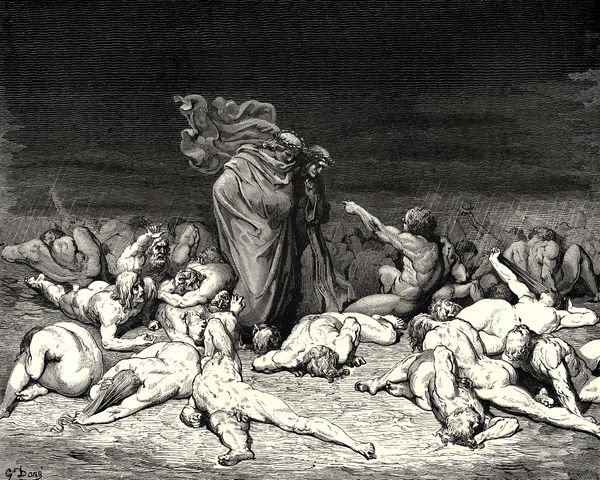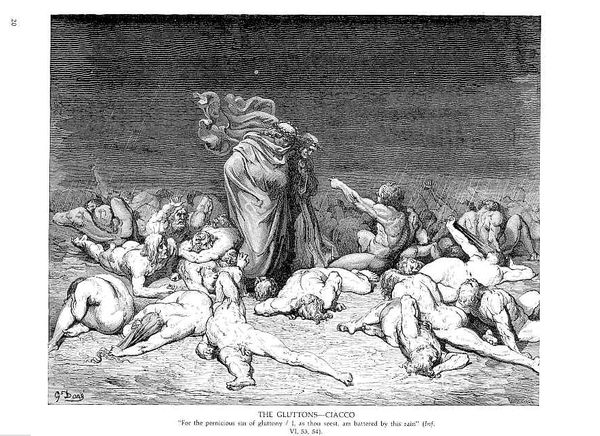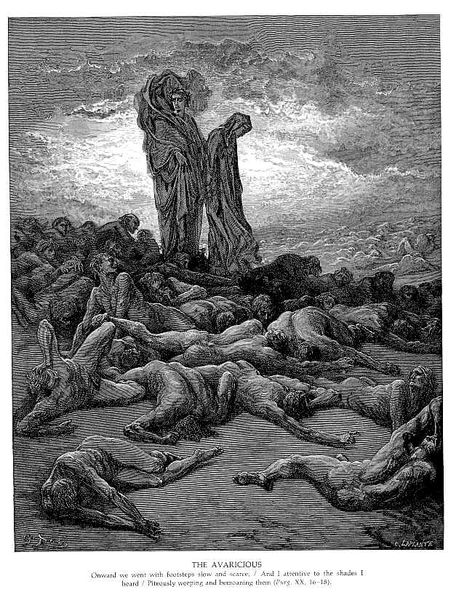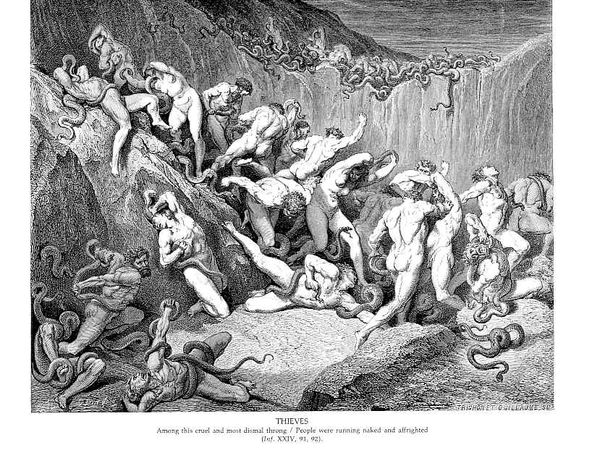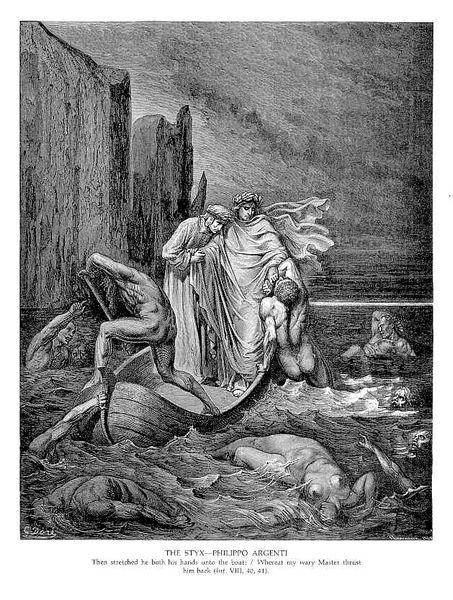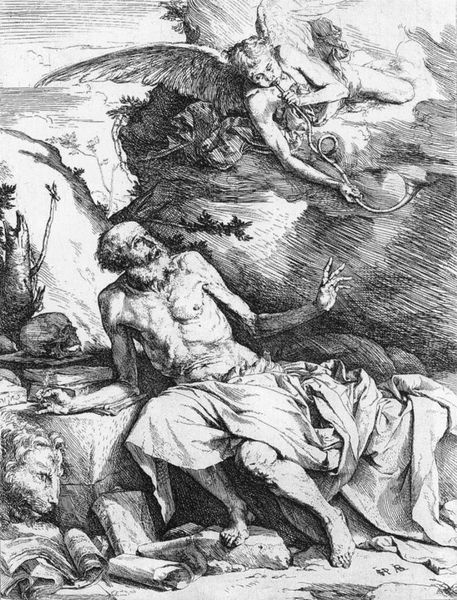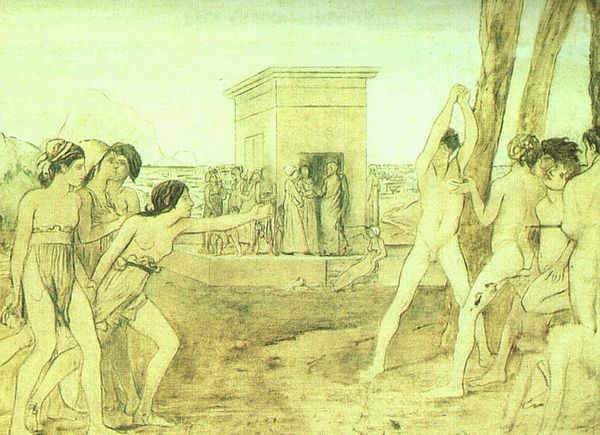
Copyright: Bernard Buffet,Fair Use
Curator: It’s hard to miss the feeling of agony radiating from Bernard Buffet’s, "L'enfer de Dante: Damnes pris dans les glaces." Completed in 1976, the work rendered in oil paint, really pulls you in. What are your first impressions? Editor: Viscerally, it's icy. The composition, with these figures trapped in what appears to be a frozen lake, it makes me think about power, the social stratification within the circles of hell, and how deeply entrenched suffering becomes. Curator: Indeed. Looking closely, one can appreciate Buffet’s stark application of oil paint, very typical of his oeuvre, creating sharp angular figures that seem almost brittle, emphasizing their vulnerability. The production values are quite distinct here. The figures are almost carved out of the surface. Editor: Absolutely, and that choice resonates so powerfully given the source material. Dante’s Inferno is nothing if not a searing indictment of social and moral failings. Considering Buffet’s place in post-war art, can we see this as an expression of disillusionment? Perhaps even a critique of societal structures that perpetuate suffering? Curator: It's an interesting point. It raises the question of audience too. What was Buffet attempting to do by presenting his version of Dante's inferno through this lens? The handling of material really makes us reflect on the manual effort required for creation. This piece becomes less a reflection of divine judgement, and more of the material struggles imposed by class and the physical burdens they create. Editor: And the way Buffet portrays these damned souls, so raw and exposed, pushes against the traditional romanticization of suffering, forcing us to confront the brutal realities of marginalization and inequity that resonate throughout history into today. Curator: Agreed. I come back to that point, the social underpinnings of these realities. To examine Buffet’s technique gives way to further consideration around materiality: Who extracted the resources to manufacture that paint? Whose labor made this artwork possible? How might those forces have affected the themes represented here? Editor: This piece makes visible so many of the cycles of oppression that shape both art and life, revealing the human cost that underpins everything we create and consume, then and now. Curator: Well, looking more deeply has revealed to me some surprising layers of complexity, challenging a surface reading. Editor: Likewise; thinking about the piece in light of social structures brings more to light about our world today, revealing deeper connections between artistic choices and political realities.
Comments
No comments
Be the first to comment and join the conversation on the ultimate creative platform.
